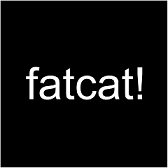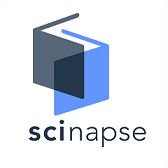An Assessment of the Safety of BSF Larvae Reared on Different Substrates for Use in Animal Feeds – Microbial Contaminants
Abstract
The use of black soldier fly (BSF) larvae as a protein source for animal feed is gaining popularity. However, the safety of the larvae and the substrates used for rearing them has not been fully investigated, which is important for economic feasibility. This study aimed to evaluate the safety of BSF larvae and rearing substrates in Kenya by analysing microbial contaminants. To achieve this, the BSF larvae were reared on common production substrates, namely kitchen waste, fruit waste, and brewer's waste, in a Completely Randomised Design (CRD). Microbial analysis was conducted using selective culture-dependent methods to determine the total viable counts of safety indicator microbes such as Staphylococcus aureus (S. aureus), Salmonella typhi (S. typhi), Escherichia coli (E coli), and Bacillus cereus (B. Cereus) and confirmed using respective biochemical tests. The data obtained were statistically analysed using the R statistical package version 4.0.5 and compared with recommended levels by KEBS, Codex Alimentarius, and the European Union (EU) standards. The microbial analysis revealed that the larvae generally had high microbial loads compared to the substrates, except for B. Cereus, which showed a decrease in counts in BSFL from 203.3±25 CFU/g in substrate to 161.1±18 CFU/g in the larvae on average. The study found low levels of S. typhi in BSFL samples from the brewery (50±10 CFU/g) and fruit waste (60±5 CFU/g) compared to other microbes, but none was detected in larvae from kitchen waste. E. coli, B. Cereus, and S. aureus were present both in the substrates and BSF larvae, but within regulatory limits for edible insect products. Based on the results, the study recommends the use of safe substrates such as kitchen and fruit waste for BSFL rearing.
Downloads
References
Begum, K., Mannan, S. J., Rezwan, R., Rahman, M. M., Rahman, M. S., & Nur-E-Kamal, A. (2017). Isolation and characterization of bacteria with biochemical and pharmacological importance from soil samples of Dhaka city. Dhaka University Journal of Pharmaceutical Sciences, 16(1), 129–136. https://doi.org/10.3329/dujps.v16i1.33390
Bessa, L. W., Pieterse, E., Marais, J., Dhanani, K., & Hoffman, L. C. (2021). Food safety of consuming black soldier fly (Hermetia illucens) larvae: Microbial, heavy metal and cross-reactive allergen risks. Foods, 10(8). https://doi.org/10.3390/FOODS10081934
Biologicals, D. (2014). Bismuth sulfite agar. Handbook of Culture Media for Food and Water Microbiology, 683–686. https://doi.org/10.1039/9781847551450-00683
Birgen, B. J., Njue, L. G., Kaindi, D. M., Ogutu, F. O., & Owade, J. O. (2020). Determinants of Microbial Contamination of Street-Vended Chicken Products Sold in Nairobi County, Kenya. International Journal of Food Science, 2020. https://doi.org/10.1155/2020/2746492
Bouzari, A., Holstege, D., & Barrett, D. M. (2015). Mineral, Fiber, and Total Phenolic Retention in Eight Fruits and Vegetables: A Comparison of Refrigerated and Frozen Storage. Journal of Agricultural and Food Chemistry, 63(3), 951–956. https://doi.org/10.1021/JF504890K
Cullere, M., Tasoniero, G., Giaccone, V., Acuti, G., Marangon, A., & Zotte, A. D. (2018). Black soldier fly as dietary protein source for broiler quails : meat proximate composition, fatty acid and amino acid profile, oxidative status and sensory traits. Animal, The International Journal of Animal Biosciences, 12(3), 640–647. https://doi.org/10.1017/S1751731117001860
EC. (2020). Commission Regulation (EC) No 2073/2005, as amended by Commission Regulation (EU) 2020/205 of 14 February 2020, on microbiological criteria for foodstuffs (Text with EEA relevance).
EFSA. (2015). Risk profile related to production and consumption of insects as food and feed. EFSA Journal, 13(10). https://doi.org/10.2903/J.EFSA.2015.4257
European Commission. (2020). Commission Regulation (EC) No 2073/2005, as amended by Commission Regulation (EU) 2020/205 of 14 February 2020, on microbiological criteria for foodstuffs (Text with EEA relevance). Official Journal of the European Union, L338, 1–26.
Ewusie, E. A., Kwapong, P. K., Ofosu-Budu, G., Sandrock, C., Akumah, A. M., Nartey, E. K., Tetegaga, C., & Agyakwah, S. K. (2019). The black soldier fly, Hermetia illucens (Diptera: Stratiomyidae): Trapping and culturing of wild colonies in Ghana. Scientific African, 5, 134. https://doi.org/10.1016/j.sciaf.2019.e00134
FSANZ. (2013). Staphylococcus aureus. https://www.foodstandards.gov.au/publications/Documents/Staphylococcus aureus.doc
Fuchs, E., Raab, C., Brugger, K., Ehling-schulz, M., Wagner, M., & Stessl, B. (2022). Performance Testing of Bacillus cereus Chromogenic Agar Media for Improved Detection in Milk and Other Food Samples.
Gorrens, E., Van Looveren, N., Van Moll, L., Vandeweyer, D., Lachi, D., De Smet, J., & Van Campenhout, L. (2021). Staphylococcus aureus in Substrates for Black Soldier Fly Larvae (Hermetia illucens) and Its Dynamics during Rearing. https://journals.asm.org/journal/spectrum
Henchion, M., Hayes, M., Mullen, A. M., Fenelon, M., & Tiwari, B. (2017). Future Protein Supply and Demand: Strategies and Factors Influencing a Sustainable Equilibrium. https://doi.org/10.3390/foods6070053
Hussain, T., Roohi, A., Munir, S., Ahmed, I., Edel-hermann, V., Kim, K. Y., Anees, M., Hussain, T., Roohi, A., Munir, S., Ahmed, I., Khan, J., Hussain, T., Roohi, A., Munir, S., Ahmed, I., & Khan, J. (2020). Biochemical characterization and identification of To cite this version : HAL Id : hal-01005074 Biochemical characterization and identification of bacterial strains isolated from drinking water sources of Kohat, Pakistan. https://doi.org/10.5897/AJMR12.2204
IDRC. (2019). Integrating insects in poultry and fish feeds in Kenya and Uganda | IDRC - International Development Research Centre. https://www.idrc.ca/en/research-in-action/integrating-insects-poultry-and-fish-feeds-kenya-and-uganda
Imathiu, S. (2020). Benefits and food safety concerns associated with consumption of edible insects. NFS Journal, 18, 1–11. https://doi.org/10.1016/J.NFS.2019.11.002
KEBS. (2020). DRAFT KENYA STANDARD Edible Insects Part 2 : Products containing Specification edible insects —. 2.
Khanom, A., Shammi, T., & Kabir, M. S. (2017a). Determination of microbiological quality of packed and unpacked bread. Stamford Journal of Microbiology, 6(1), 24–29. https://doi.org/10.3329/sjm.v6i1.33515
Khanom, A., Shammi, T., & Kabir, M. S. (2017b). Determination of microbiological quality of packed and unpacked bread. Stamford Journal of Microbiology, 6(1), 24–29. https://doi.org/10.3329/SJM.V6I1.33515
Kim, D.-B., & Cha, S.-S. (2019). A Study on Microbial Contamination of Foods Exposed to Multiple Environments. Korean Journal of Food & Health Convergence, 5(3), 35–40. http://dx.doi.org/10.13106/kjfhc.2019.vol5.no3.35.
Lievens, S., Poma, G., De Smet, J., Van Campenhout, L., Covaci, A., & Van Der Borght, M. (2021). Chemical safety of black soldier fly larvae (Hermetia illucens), knowledge gaps and recommendations for future research: a critical review. Journal of Insects as Food and Feed, February, 1–14. https://doi.org/10.3920/jiff2020.0081
Liu, X., Chen, X., Wang, H., Yang, Q., Ur Rehman, K., Li, W., Cai, M., Li, Q., Mazza, L., Zhang, J., Yu, Z., & Zheng, L. (2017). Dynamic changes of nutrient composition throughout the entire life cycle of black soldier fly. PLoS ONE, 12(8). https://doi.org/10.1371/journal.pone.0182601
NFCPSA. (2014). Advisory report on the risks associated with the consumption of mass-reared insects (Issue October, pp. 1–21). https://zenodo.org/record/439001#.Y1NgWHZBy00
Ngonga, C. A., Gor, C. O., Okuto, E. A., & Ayieko, M. A. (2021). Growth performance of Acheta domesticus and Gryllus bimaculatus production reared under improvised cage system for increased returns and food security. Journal of Insects as Food and Feed, 7(3), 301–310. https://doi.org/10.3920/JIFF2020.0082
Nguyen, T. T. X., Tomberlin, J. K., & Vanlaerhoven, S. (2013). Influence of Resources on Hermetia illucens (Diptera: Stratiomyidae) Larval Development. Journal of Medical Entomology, 50(4), 898–906. https://doi.org/10.1603/ME12260
Nyakeri, E. M. (2018). OPTIMIZATION OF PRODUCTION OF BLACK SOLDIER FLY LARVAE (Hermetia illucens, L) FOR FISH FEED FORMULATION. 3(2), 139–157. https://www.mendeley.com/catalogue/a61efd7b- e705- 397a- 82cf- 8b3f739915f0/?utm_source=desktop&utm_medium=1.19.8&utm_campaign=open_catalog&userDocumentId=%7B400cb329-c358-3e5e-9f99-9cf41efc22ba%7D
Nyakeri, E. M., Ogola, H. J., Ayieko, M. A., & Amimo, F. A. (2016). An open system for farming black soldier fly larvae as a source of proteins for smallscale poultry and fish production. Https://Doi.Org/10.3920/JIFF2016.0030, 3(1), 51– 56. https://doi.org/10.3920/JIFF2016.0030
Samtiya, M., Aluko, R. E., & Dhewa, T. (2020). Plant food anti-nutritional factors and their reduction strategies: an overview. Food Production, Processing and Nutrition 2020 2:1, 2(1), 1–14. https://doi.org/10.1186/S43014-020-0020-5
Schmitt, E., Belghit, I., Johansen, J., Leushuis, R., Lock, E.-J., Melsen, D., Kathirampatti, R., Shanmugam, R., Loon, J. Van, & Paul, A. (2019). Growth and Safety Assessment of Feed Streams for Black Soldier Fly Larvae: A Case Study with Aquaculture Sludge. Animals, 9, 189. https://doi.org/10.3390/ani9040189
Shumo, M., Osuga, I. M., Khamis, F. M., Tanga, C. M., Fiaboe, K. K. M., Subramanian, S., Ekesi, S., van Huis, A., & Borgemeister, C. (2019). The nutritive value of black soldier fly larvae reared on common organic waste streams in Kenya. Scientific Reports 2019 9:1, 9(1), 1–13. https://doi.org/10.1038/s41598-019-46603-z
Stamer, A. (2015). Insect proteins—a new source for animal feed. EMBO Reports, 16(6), 676–680. https://doi.org/10.15252/EMBR.201540528
Tallent, S. M., Knolhoff, A., Rhodehamel, E. J., Harmon, S. M., & W., B. (2020). Bacteriological Analytical Manual Chapter 14: Bacillus cereus. FDA, October.
The County Government of Siaya. (2023). Department of Water, Sanitation, Environment, Natural Resources and Climate Change, Siaya County Climate Change Action Plan (2023-2028). The County Government of Siaya, Republic of Kenya.
Tschirner, M., & Simon, A. (2015). Influence of different growing substrates and processing on the nutrient composition of black soldier fly larvae destined for animal feed. Journal of Insects as Food and Feed, 1(4), 249–259. https://doi.org/10.3920/JIFF2014.0008
United Nations. (2019). World population projected to reach 9.8 billion in 2050, and 11.2 billion in 2100. UN Department of Economic and Social Affairs, 8–12.
Vaus, D. de. (2006). Research Design: Sage benchmarks in social research methods. 358. https://catalogue.nla.gov.au/catalog/3308406
Woods, M. J., Hoffman, L. C., & Pieterse, E. (2019). Artificial diets for neonatal black soldier fly (Hermetia illucens) larvae. 5(2), 99–105. https://doi.org/10.3920/JIFF2018.0028
Copyright (c) 2025 Alex Herbert Msunje, Evans Nyakeri, Erick Okuto

This work is licensed under a Creative Commons Attribution 4.0 International License.




























